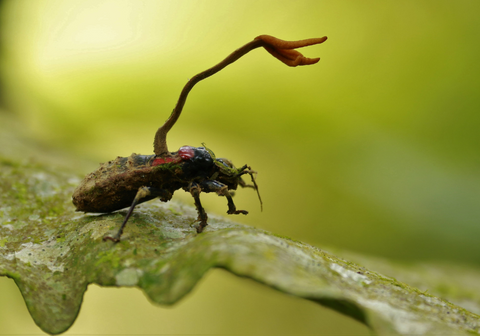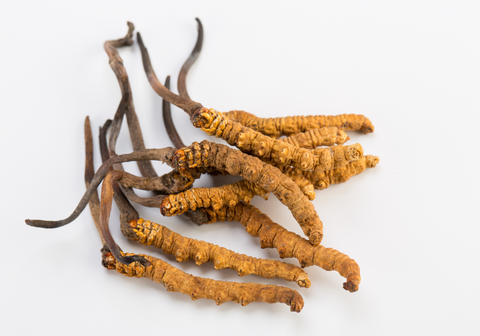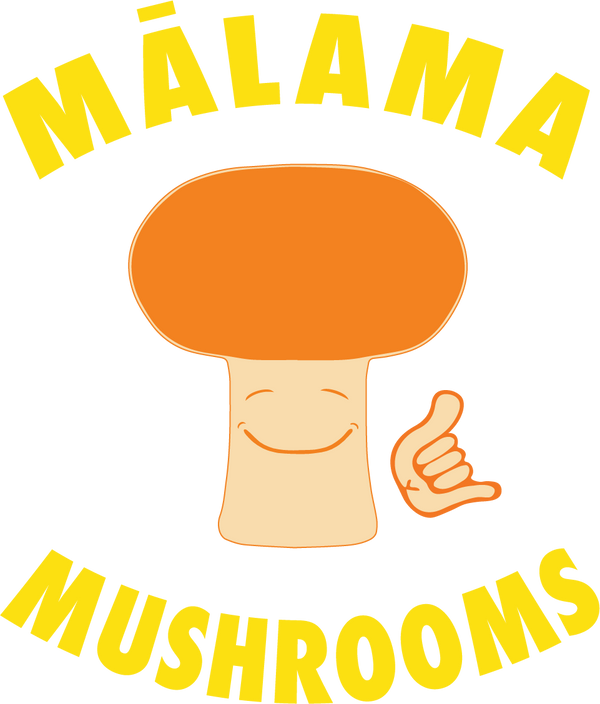
The Fascinating Life of Cordyceps: Unraveling the Parasitic Origins of a Medicinal Marve
Share
There are many guesses as to how many species of fungi exist, 5 million, 6 million (we never really will know). What we do know is that one group of fungi is so fascinating that they wrote an entire video games and television series about them. Yes we’re talking The Last of Us and the mushroom is cordyceps! Cordyceps seem like something out of a science fiction novel. This is because they are parasitic to insects. As off-putting as that may seem, cordyceps are actually good for humans. This "zombie fungi" has been used for centuries by cultures in Asia for its health benefits. Research today is finally catching up to what these traditional peoples have known for ages.
Here, we will delve into the intriguing world of Cordyceps, exploring their parasitic origins, the science behind their therapeutic potential, their diverse species, historical use in traditional medicine, modern applications in health, and the methods of cultivation and sustainable harvesting.
Cordyceps: Nature's Parasitic Wonder
Cordyceps are a group of parasitic fungi native to China, India, Tibet and Bhutan. There are also species that grow wild in North America. They gained the nickname “zombie fungus” because they target certain insects and arthropods, using their bodies as a host. The name "Cordyceps" is derived from the Greek words "kordyle," meaning club, and "kepos," meaning head, accurately describing their unique growth pattern. These fungi infect their host organisms, ultimately leading to the host's death. The fungus then emerges from the host's body in a distinctive stalked structure, producing spores that disperse to infect new hosts. This parasitic lifestyle is both gruesome and astonishing, showcasing nature's diverse strategies for survival and reproduction.

The Science Behind Cordyceps
Understanding the science behind Cordyceps is crucial to appreciating their medicinal potential. These fungi are packed with bioactive compounds, including polysaccharides, nucleosides, and cordycepin, which are responsible for the majority of cordyceps’ health benefits. Polysaccharides play a role in immune modulation, potentially helping our immune system operate at its best. Nucleosides are akin to molecular building blocks, with potential applications in everything from DNA repair to cellular energy production. And then there's cordycepin, a unique compound that can mimic adenosine in our cells, leading to various physiological effects. Scientists have been unraveling these biochemical mysteries, uncovering the potential benefits of Cordyceps in areas like immune support, antioxidant activity, and adaptogenic properties.
The Diversity of Cordyceps Species
The Cordyceps genus encompasses a wide variety of species, each with its unique characteristics and host preferences. We’ll start with Cordyceps militaris, known for its bright orange fruiting bodies. This species is found in North America and makes up the majority of the cordyceps supplements you’ll find on the market. This is because it can be cultivated as well as found in the wild.

Cordyceps sinensis is a rare and highly sought-after species found in the Himalayan region. Unlike Cordyceps militaris, sinensis can’t be cultivated on substrate. It requires a living host. It can also only be found in its native region of Asia. This is the type of cordyceps that was used in traditional medicine. For this reason Cordyceps sinensis is the most expensive species of cordyceps.

What are the differences between the two when it comes to health benefits? Both have similar health benefits, but Cordyceps sinensis does not contain cordycepin. Even though it is highly priced, it may not be worth the extra dollars. Both species do have similar effects in the body, but it is hard to say if one is superior to the other.
Cordyceps in Traditional Medicine
Cordyceps, often referred to as "winter worm, summer grass" in Chinese, were first documented in ancient Chinese texts as early as the 15th century. They were highly prized for their supposed medicinal properties. In traditional Chinese medicine, cordyceps were believed to enhance vitality and longevity.
Cordyceps were primarily used to support respiratory health, making them a popular remedy for conditions such as coughs, asthma, and bronchitis. In mountainous regions they were used to help people adapt to the altitude by helping increase oxygen uptake in the body.
In traditional herbalism, Cordyceps were considered adaptogens, meaning they were believed to help the body adapt to stress and maintain balance. This adaptogenic property contributed to their reputation for enhancing overall well-being. They were also used to support kidney function and improve sexual health, including addressing issues like impotence and low libido. In some cultures, Cordyceps were considered aphrodisiacs, believed to improve sexual potency and desire.
Modern Medicinal Potential of Cordyceps
In recent years, Cordyceps have gained popularity in modern medicine and wellness industries. Scientific research has been able to prove the benefits of cordyceps that Asian cultures have known for centuries. Now we have insight as to how the compounds in cordyceps help increase oxygen uptake in the lungs, boost the immune system and promote healthy blood flow.
Another difference between traditional and modern use of cordyceps is that it is now being marketed as an athletic supplement. Because of its ability to increase energy and lung capacity, cordyceps is perfect for athletes and people who workout.
Cultivation and Sustainable Harvesting
With growing demand for Cordyceps, there is a need for sustainable cultivation and harvesting practices. Cultivation methods have been developed to mimic their natural habitat, reducing the pressure on wild populations. Because Cordycepsis sinensis is so highly valued, it threatens wild populations in Asia where it holds cultural significance. This is why cultivating Cordycepsis militaris is so important. You get all the same health benefits, but without reducing wild populations of a medicine sacred to cultures that first discovered it.

For a sustainably sourced cordyceps powder, Mālama Mushrooms has an excellent Cordyceps Extract Powder and Cordyceps Cacao Mix. The latter makes for a delicious hot chocolate and a fun way to consume the health benefits of cordyceps.
Conclusion
Cordyceps are a testament to the marvels of nature, showcasing the interplay between parasitism and medicinal potential. From their parasitic origins and diverse species to their historical use in traditional medicine and modern medicinal applications, Cordyceps continue to captivate scientists, healers, and nature enthusiasts alike.
We know you’re curious to try this mushroom out now. For 15% off your cordyceps order, use coupon code MALAMABLOG.
